Python scrapy爬取起點中文網小說榜單
爬取排行榜小說的作者,書名,分類以及完結或連載
二、項目分析目標url:“https://www.qidian.com/rank/hotsales?style=1&page=1”
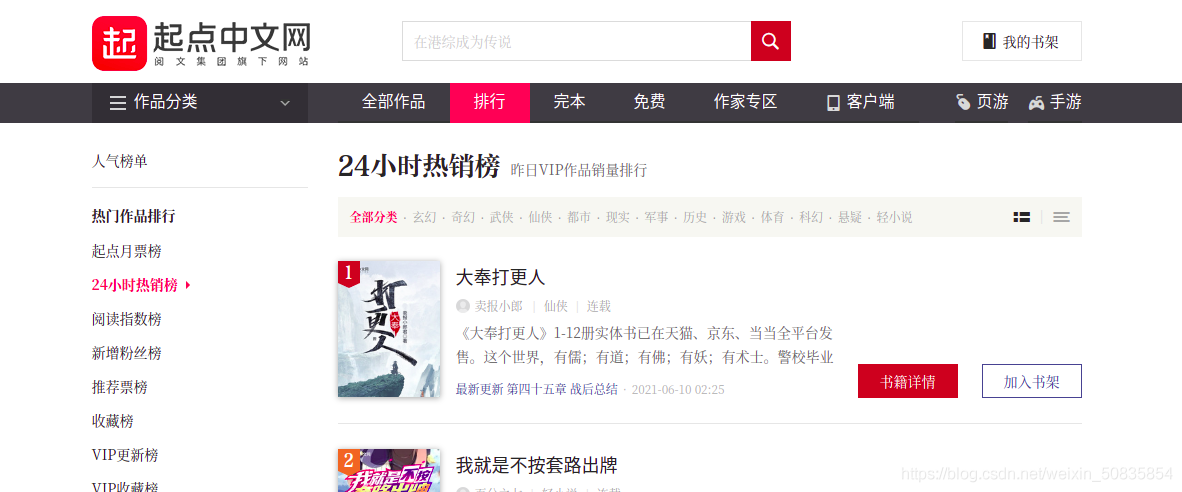
通過控制臺搜索發現相應信息均存在于html靜態網頁中,所以此次爬蟲難度較低。

通過控制臺觀察發現,需要的內容都在一個個li列表中,每一個列表代表一本書的內容。
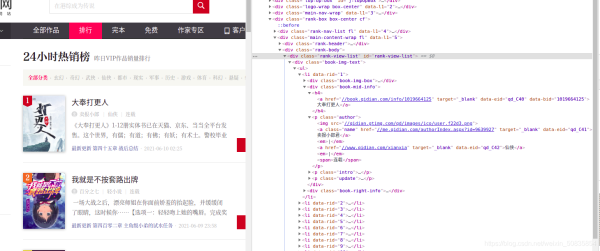
在li中找到所需的內容
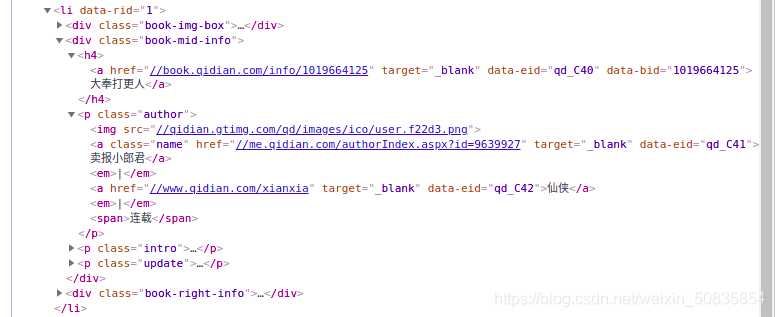
找到第兩頁的url“https://www.qidian.com/rank/hotsales?style=1&page=1”“https://www.qidian.com/rank/hotsales?style=1&page=2”對比找到頁數變化開始編寫scrapy程序。
三、程序編寫創建項目太簡單,不說了
1.編寫item(數據存儲)
import scrapyclass QidianHotItem(scrapy.Item): name = scrapy.Field() #名稱 author = scrapy.Field() #作者 type = scrapy.Field() #類型 form= scrapy.Field() #是否完載
2.編寫spider(數據抓取(核心代碼))
#coding:utf-8from scrapy import Requestfrom scrapy.spiders import Spiderfrom ..items import QidianHotItem#導入下需要的庫class HotSalesSpider(Spider):#設置spider的類 name = 'hot' #爬蟲的名稱 qidian_header={'user-agent':'Mozilla/5.0 (X11; Linux x86_64) AppleWebKit/537.36 (KHTML, like Gecko) Chrome/90.0.4430.93 Safari/537.36'} #設置header current_page = 1 #爬蟲起始頁 def start_requests(self): #重寫第一次請求url='https://www.qidian.com/rank/hotsales?style=1&page=1'yield Request(url,headers=self.qidian_header,callback=self.hot_parse)#Request發起鏈接請求#url:目標url#header:設置頭部(模擬瀏覽器)#callback:設置頁面抓起方式(空默認為parse) def hot_parse(self, response):#數據解析#xpath定位list_selector=response.xpath('//div[@class=’book-mid-info’]')#獲取所有小說for one_selector in list_selector: #獲取小說信息 name=one_selector.xpath('h4/a/text()').extract()[0] #獲取作者 author=one_selector.xpath('p[1]/a[1]/text()').extract()[0] #獲取類型 type=one_selector.xpath('p[1]/a[2]/text()').extract()[0] # 獲取形式 form=one_selector.xpath('p[1]/span/text()').extract()[0] item = QidianHotItem() #生產存儲器,進行信息存儲 item[’name’] = name item[’author’] = author item[’type’] = type item[’form’] = form yield item #送出信息 # 獲取下一頁URL,并生成一個request請求 self.current_page += 1 if self.current_page <= 10:#爬取前10頁next_url = 'https://www.qidian.com/rank/hotsales?style=1&page='+str(self.current_page)yield Request(url=next_url,headers=self.qidian_header,callback=self.hot_parse) def css_parse(self,response):#css定位list_selector = response.css('[class=’book-mid-info’]')for one_selector in list_selector: # 獲取小說信息 name = one_selector.css('h4>a::text').extract()[0] # 獲取作者 author = one_selector.css('.author a::text').extract()[0] # 獲取類型 type = one_selector.css('.author a::text').extract()[1] # 獲取形式 form = one_selector.css('.author span::text').extract()[0] # 定義字典 item=QidianHotItem() item[’name’]=name item[’author’] = author item[’type’] = type item[’form’] = form yield item
3.start.py(代替命令行)
在爬蟲項目文件夾下創建start.py。
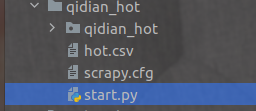
from scrapy import cmdline#導入cmd命令窗口cmdline.execute('scrapy crawl hot -o hot.csv' .split())#運行爬蟲并生產csv文件
出現類似的過程代表爬取成功。
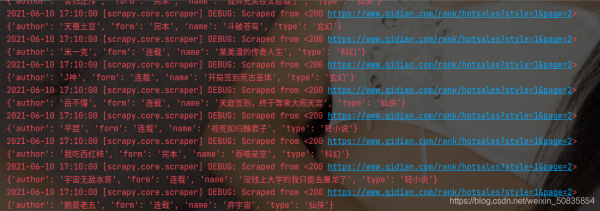
hot.csv
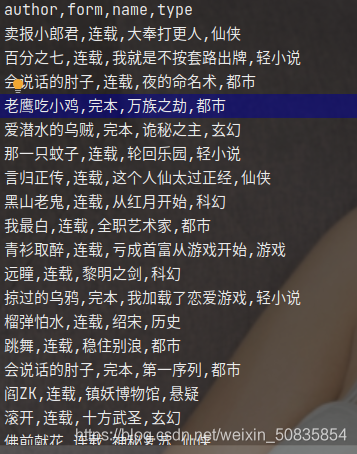
本次爬蟲內容還是十分簡單的因為只用了spider和item,這幾乎是所有scrapy都必須調用的文件,后期還會有middlewarse.py,pipelines.py,setting.py需要編寫和配置,以及從javascript和json中提取數據,難度較大。
到此這篇關于Python scrapy爬取起點中文網小說榜單的文章就介紹到這了,更多相關Python爬取起點中文網內容請搜索好吧啦網以前的文章或繼續瀏覽下面的相關文章希望大家以后多多支持好吧啦網!
相關文章:

 網公網安備
網公網安備